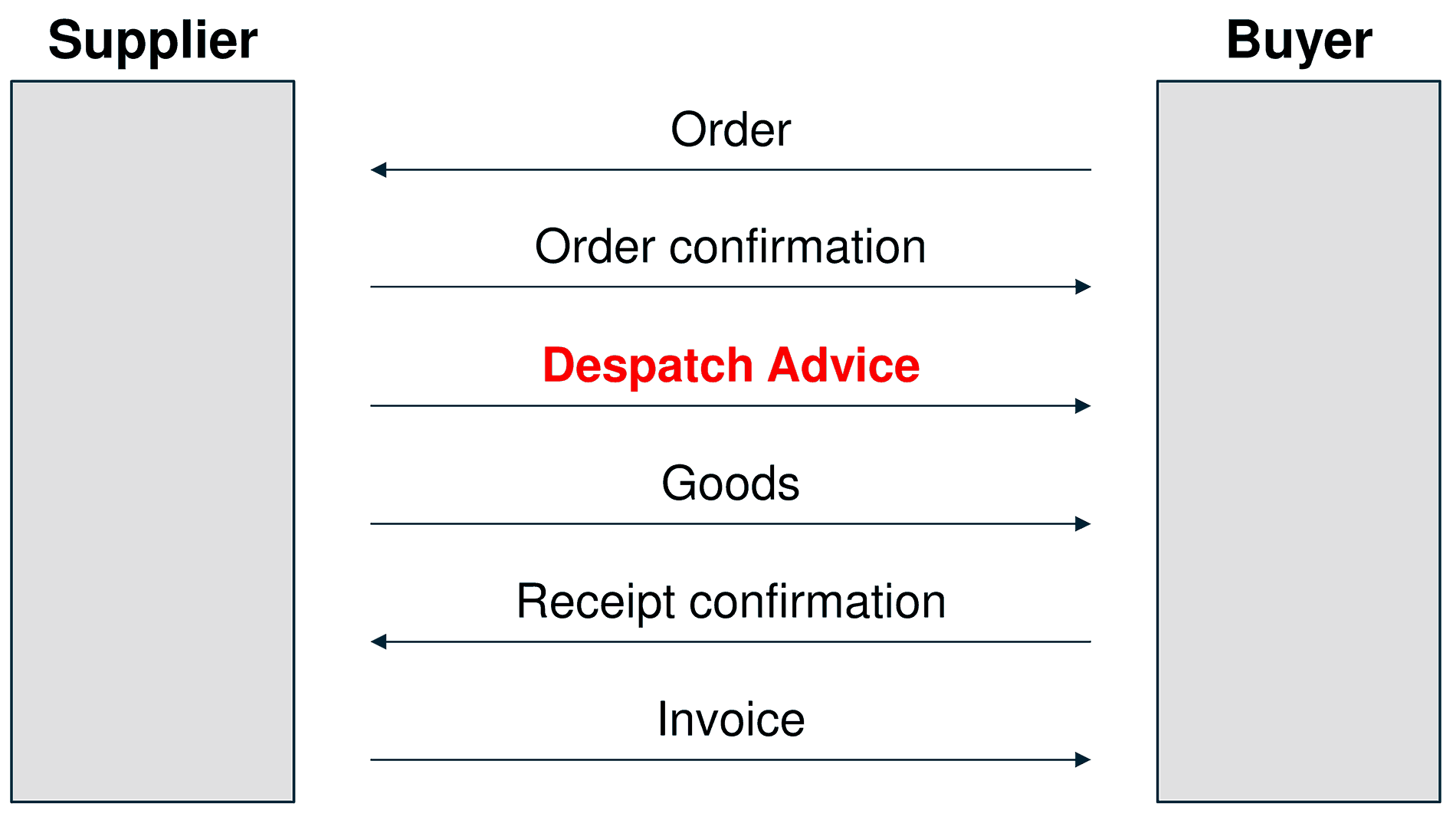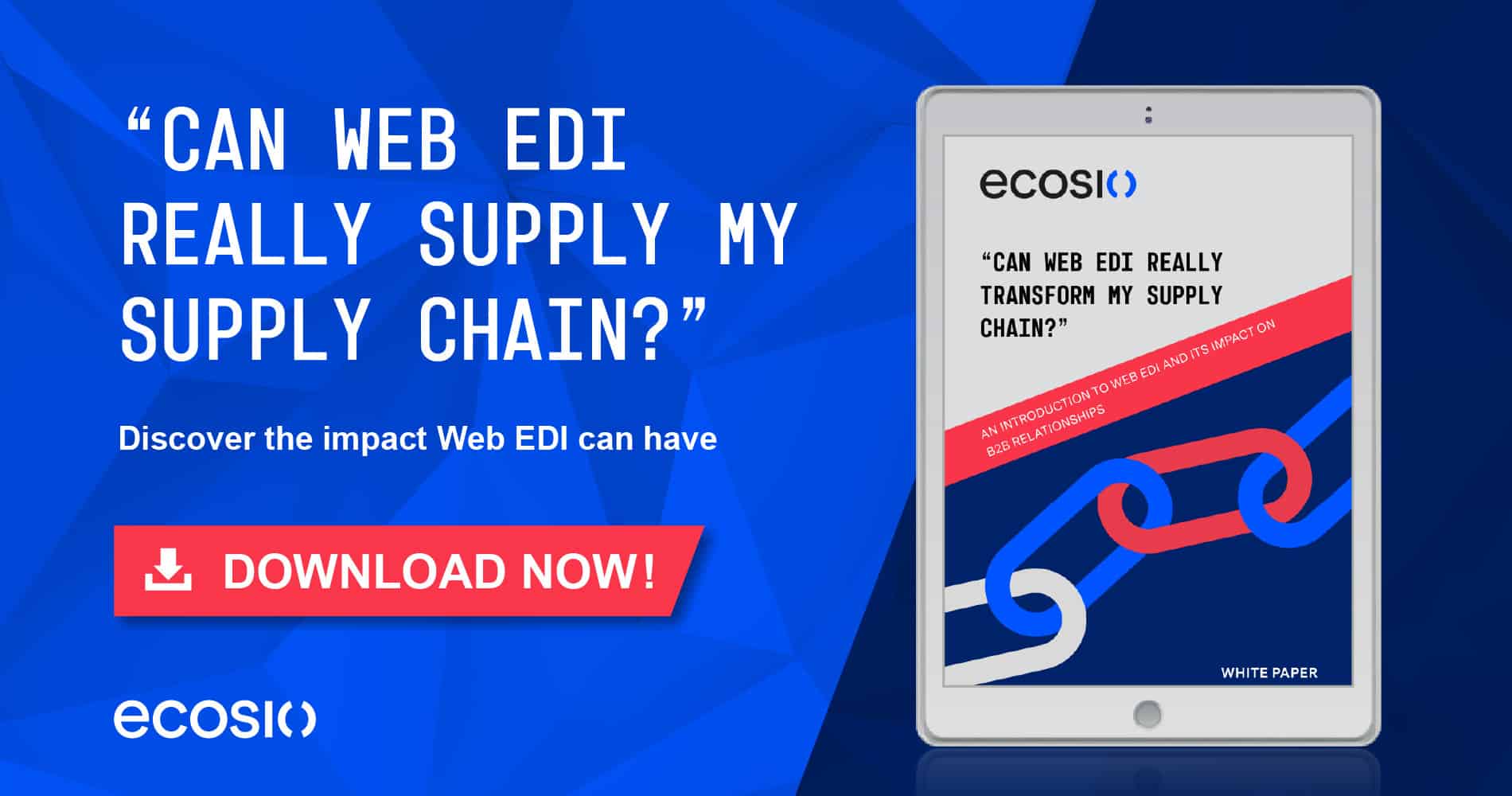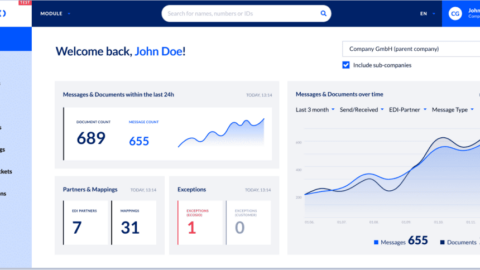Despatch advice
DESADV is the abbreviation for despatch advice. A despatch advice is a type of document that is exchanged in the course of procurement and distribution processes. DESADV is also the name of the corresponding EDIFACT document type of a despatch advice. The designation ASN (advance shipping notice) is often used in the automotive industry, instead of DESADV. Both terms, however, mean the same.
The following illustration provides an overview of the various documents in a procurement process occurring in the retail industry and illustrates the use of a despatch advice.

Sequence of electronic documents in a procurement process in the retail industry
A buyer uses an order message to place an order at a supplier. The supplier sends an order confirmation message to confirm the order. The supplier will then send a dispatch advice to the buyer before shipping the actual goods. This will inform the buyer about the nature of the goods, the quantity and the time of delivery, allowing him to prepare his inbound logistics. The goods will then be despatched. The buyer may optionally acknowledge the receipt of goods with a receipt confirmation message. The last step is the submission of an invoice message.
The process described above serves just as an example. Different types of documents may be used, depending on participating partners and the industry. Amazon, for instance, attaches great importance to order confirmation messages. Inventory Report (INVRPT) or Sales Report (SLSRPT) documents play an important role in the textile sector.
The need for notification of delivery
Commercial enterprises such as Tesco face enormous logistic challenges every day. Goods are ordered from many different suppliers for delivery either to warehouse locations (cross-docking) or to individual branches directly (drop-shipping).
Overviews of pending deliveries must be available at all times to ensure that cross-docking and drop-shipping logistics remain efficient. Using the despatch information sent by the suppliers the retail stores may plan and optimize their inbound logistics.
Loading and unloading in a warehouse
Incoming goods must be offloaded and stored in their designated place as quickly as possible. In the case of refrigerated and deep-frozen goods, adequate storage capacities must be ready, to avoid interruption of the cold chain.
To ensure efficient warehouse administration all suppliers must transmit electronic despatch advice messages to announce upcoming deliveries. The despatch advice will contain the date and time of the delivery and the details of the delivered goods. Depending on the given industry, this may comprise basic product designations as well as information about the itemised packaging means and their hierarchy on a pallet. Gross and net weights may also be given.
Different types of DESADV messages
Different EDI standards may be used for the exchange of electronic exchange of despatch information, depending on the industry. The EDIFACT EANCOM format is primarily used in the retail industry in Europe. Thereby, the two most widely used document types are: EDIFACT DESADV D96A and EDIFACT DESADV D01B. The older EDIFACT DESADV D93A may also occasionally occur.
VDA standards are mostly used in the automotive industry. The two VDA despatch advice standards are VDA 4913 (the older, flat text-based standard) and VDA 4987 (the newer, EDIFACT-based standard).
ANSI ASC X12 standards are commonly used in North America. The ANSI despatch advice standard is 856 Ship Notice/Manifest.
More questions about DESADV?
You have further questions in regard to DESADV? You would like to use DESADV messages with a customer or supplier of yours? Please do contact us or use our chat – we’re more than happy to help!













